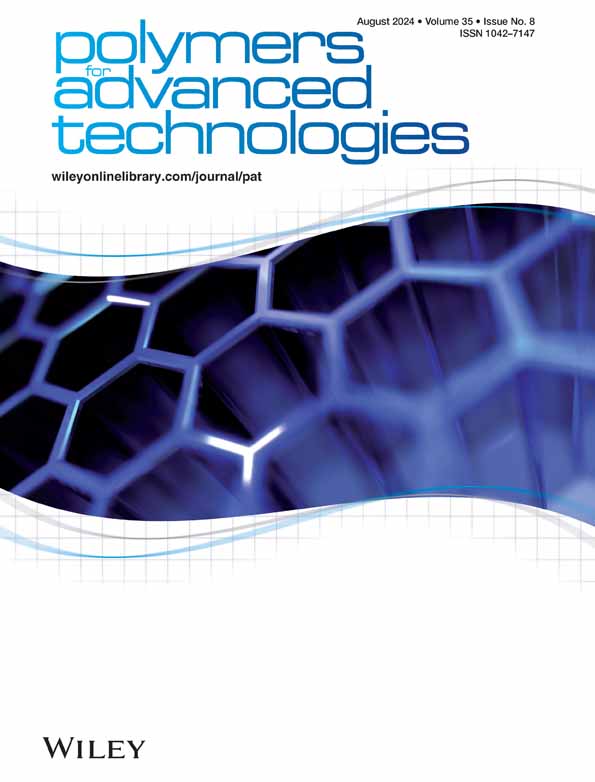Multifunctional strain sensor with adjustable conductive network for wearable applications
IF 3.4
4区 工程技术
Q2 POLYMER SCIENCE
引用次数: 0
Abstract
Wearable sensors based on nanomaterials have recently elicited keen research interest and potential for a new range of flexible devices. This paper presents a simple method for the preparation of laser‐induced porous graphene (LIG) and discusses its application in monitoring human vital signs. LIG formed on a polyimide (PI)/polydimethylsiloxane (PDMS) composite material exhibits inherent high stretchability (over 30%), eliminating the need for transfer processes used in LIG prepared by laser scribing on PI films. LIG/CuSO带可调导电网络的多功能应变传感器,适用于可穿戴应用
基于纳米材料的可穿戴传感器近来引起了研究人员的浓厚兴趣,并有望成为一系列新的柔性设备。本文介绍了一种制备激光诱导多孔石墨烯(LIG)的简单方法,并讨论了其在监测人体生命体征方面的应用。在聚酰亚胺(PI)/聚二甲基硅氧烷(PDMS)复合材料上形成的石墨烯具有固有的高伸展性(超过 30%),无需在 PI 薄膜上通过激光划线制备石墨烯时使用的转移工艺。在激光诱导石墨烯的基础上,含有不同浓度铜颗粒的 LIG/CuSO4 复合材料显示出可调的机械和电子特性。所制造的 LIG 具有良好的循环稳定性,对拉伸应变的电阻响应接近线性,因此适用于可穿戴电子设备,其最大应变值和对施加应变的线性响应范围为 3% 至 79%。该传感器响应速度快、灵敏度高,可对人体脉搏、关节运动和复杂动态进行实时检测。LIG 柔性传感器的多功能优势为下一代可穿戴电子设备提供了潜在应用。
本文章由计算机程序翻译,如有差异,请以英文原文为准。
求助全文
约1分钟内获得全文
求助全文
来源期刊

Polymers for Advanced Technologies
工程技术-高分子科学
CiteScore
6.20
自引率
5.90%
发文量
337
审稿时长
2.1 months
期刊介绍:
Polymers for Advanced Technologies is published in response to recent significant changes in the patterns of materials research and development. Worldwide attention has been focused on the critical importance of materials in the creation of new devices and systems. It is now recognized that materials are often the limiting factor in bringing a new technical concept to fruition and that polymers are often the materials of choice in these demanding applications. A significant portion of the polymer research ongoing in the world is directly or indirectly related to the solution of complex, interdisciplinary problems whose successful resolution is necessary for achievement of broad system objectives.
Polymers for Advanced Technologies is focused to the interest of scientists and engineers from academia and industry who are participating in these new areas of polymer research and development. It is the intent of this journal to impact the polymer related advanced technologies to meet the challenge of the twenty-first century.
Polymers for Advanced Technologies aims at encouraging innovation, invention, imagination and creativity by providing a broad interdisciplinary platform for the presentation of new research and development concepts, theories and results which reflect the changing image and pace of modern polymer science and technology.
Polymers for Advanced Technologies aims at becoming the central organ of the new multi-disciplinary polymer oriented materials science of the highest scientific standards. It will publish original research papers on finished studies; communications limited to five typewritten pages plus three illustrations, containing experimental details; review articles of up to 40 pages; letters to the editor and book reviews. Review articles will normally be published by invitation. The Editor-in-Chief welcomes suggestions for reviews.
 求助内容:
求助内容: 应助结果提醒方式:
应助结果提醒方式:


